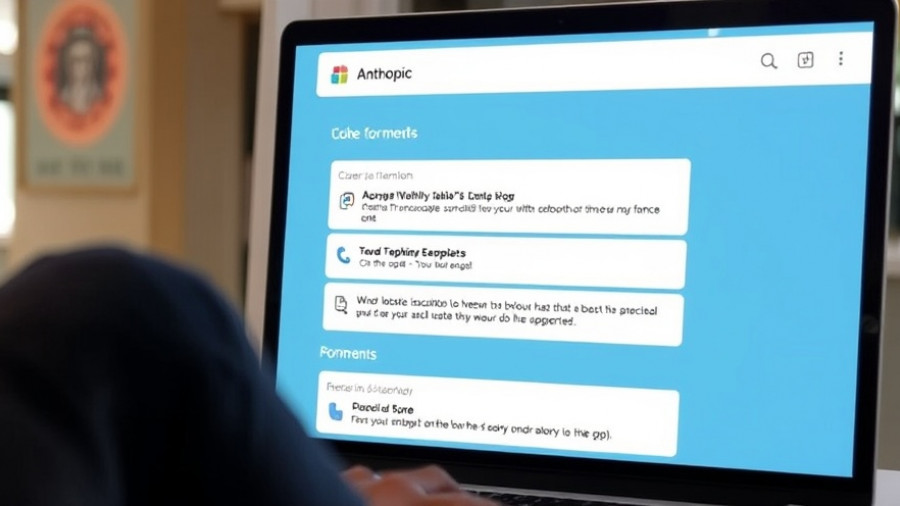
Microsoft’s Bold Move: Expanding AI Choices for Users
In a significant shift towards diversifying its artificial intelligence (AI) offerings, Microsoft has announced the introduction of Anthropic’s Claude models—Claude Sonnet 4 and Opus 4.1—into its Copilot suite. This event marks a critical milestone for Microsoft as it attempts to create a more versatile AI environment for its users while reducing its previous dependency on OpenAI.
The Rise of Anthropic and Its Role in AI
Anthropic, co-founded by former OpenAI employees, brings its advanced AI systems to Microsoft 365 applications, further popularizing Claude AI among businesses eager for alternatives in the AI landscape. With a recent funding round that boosted its valuation to an astounding $183 billion, Anthropic's technologies are increasingly recognized for their reliability and innovative capabilities, especially in enterprise settings.
A Closer Look at the New Claude Models
Microsoft Copilot now allows users to leverage these Claude models in two key areas: the Researcher tool and Copilot Studio. In Researcher, subscribers can easily switch between OpenAI’s models and Claude Opus 4.1—an option that a growing number of users may find appealing. Launched last year, Copilot Studio provides businesses with the flexibility to design custom agents that can incorporate both Claude and OpenAI technologies, further broadening creative possibilities.
What This Means for Microsoft and Users
The integration of Claude into Copilot highlights a crucial transition for Microsoft. By embracing Anthropic’s AI capabilities, it can address a wider spectrum of user needs, enabling businesses to explore diverse AI solutions without being locked into a single provider. This approach not only empowers Microsoft’s partners and customers but also positions Anthropic as a formidable player in the AI sector.
Future Predictions: The Evolution of AI Offerings
As Microsoft continues to diversify its offerings, we can expect a more competitive AI marketplace. With OpenAI reportedly collaborating with Google to enhance its own capabilities, the AI landscape may undergo rapid changes, making seamless transitions between providers essential. Microsoft's strategic shifts open up a rich dialogue about the future of AI development, particularly regarding ethical applications, user autonomy, and technological innovation designed for various sectors.
Maximizing the Benefits of Claude AI
For users interested in maximizing the potential of Claude AI, understanding how to select models in Copilot is critical. The interface encourages switching models through simple clicks, promoting experimentation with diverse solutions. By harnessing the unique advantages of both OpenAI and Anthropic technologies, companies can tailor their AI engagements for efficiency and effectiveness.
This action is a testament to the ever-evolving technological landscape. Users must not only stay informed but also actively engage with the available tools to reap maximum benefits. Microsoft’s forward-thinking initiatives in AI offer a glimpse into a future where technology adapts better to user needs and empowers individuals...
 Add Row
Add Row  Add
Add 




Write A Comment